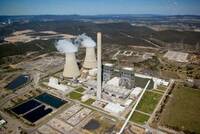- England
- Scotland
- France
- Holland
- Germany
- Italy
- Spain
- Portugal
- USA
- China
- Japan
- India
- Iran
- Advice
- Gardens
- England
- Scotland
- France
- Holland
- Germany
- Italy
- Spain
- Portugal
- USA
- China
- Japan
- India
- Iran
- Advice
- Garden Tours
Book: Landscape Planning and Environmental Impact Design: from EIA to EID
Chapter: Chapter 11 Urbanisation and growth management
Other types of industry do not. Industry used to be seen as one of the grand avenues to human progress. 'To be happy and prosperous' my great grandfather used to say, 'one must be busy and industrious'. But in modern cities 'industry gets treated like a disease' (Alexander 1977: 228) and set apart from other land uses, like the fever hospitals of my grandfather's time. There are few industrial parallels to the songs, paintings and poetry which celebrate the farmer's life of honest toil in pastoral surroundings. Sir Uvedale Price, whose Essays on the Picturesque were read avidly throughout the nineteenth century, had a surprisingly modern attitude to the effects of industry on the landscape. He wrote of cotton mills that 'nothing can equal them for the purpose of disbeautifying an enchanting piece of scenery' (Hoskins 1955: 170). Other nineteenth century industries were nastier and more dangerous. Iron works, chemical manufacturies and coal mines were extremely hazardous places, both for their employees and for neighbouring land users. Some observers were fascinated by the demonic spectacle, as their ancestors had been by battlefields, but these industries were not seen as a source of aesthetic pleasure or spiritual uplift. In some parts of Britain the noxious new industries gathered together to create 'a sort of pandemonium on earth', as in the following description of the Black Country, written in 1850: From Birmingham to Wolverhampton, a distance of thirteen miles, the country... seemed a sort of pandemonium on earth ï¾ a region of smoke and fire filling the whole area between earth and heaven; amongst which certain figures of human shape ï¾ if shape they had ï¾ were occasionally to glide from one cauldron of curling flame to another. The eye could not descry any form or colour indicative of country ï¾ of the hues and aspect of nature, or anything human or divine. Although nearly midï¾day, in Summer, the sun and sky were obscured and discoloured; something like horses, men women and children seemed to move in the midst of the black and yellow smoke and flashes of fire; but were again lost in obscurity. (Tandy 1975: 25). The Black Country was dominated by industry but, now the smoke has cleared, we can see that 'the region of smoke and fire' also contained houses for the working population. Even today, when most of the old smokestack industries have gone, the area is remarkable for its close intermixture of industry, housing and agriculture. W G Hoskins wrote that life in the Black Country reached 'the rock bottom of filth and ugliness, and of human degradation', and that industrialists 'were completely and grotesquely insensitive. No scruples weakened their lust for money; they made their money and left behind their muck' (Hoskins 1955: 176). Those who could afford it moved away and left what became, in effect, an industrial zone. It will take a long time to efface the memory of smokestack industries.

